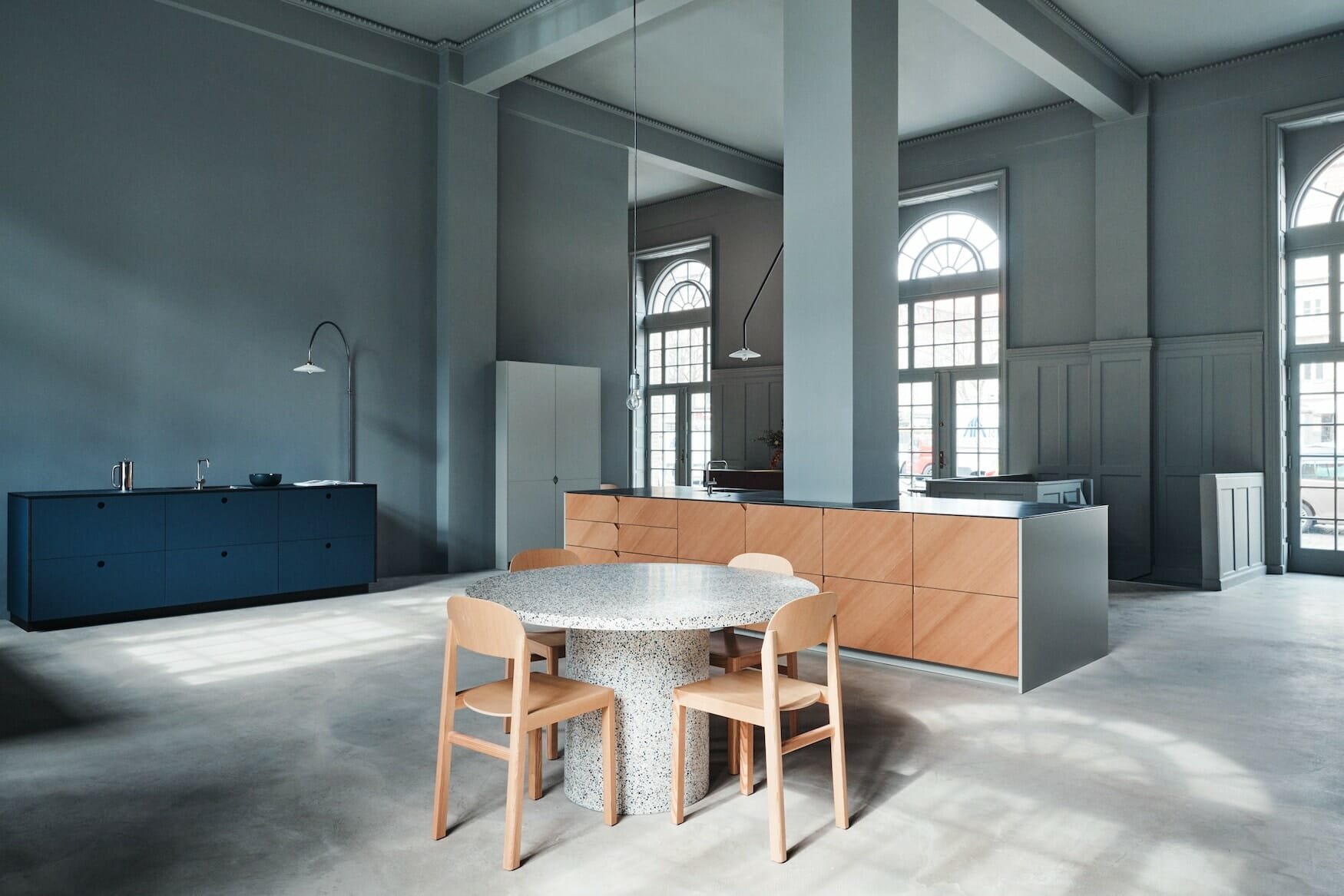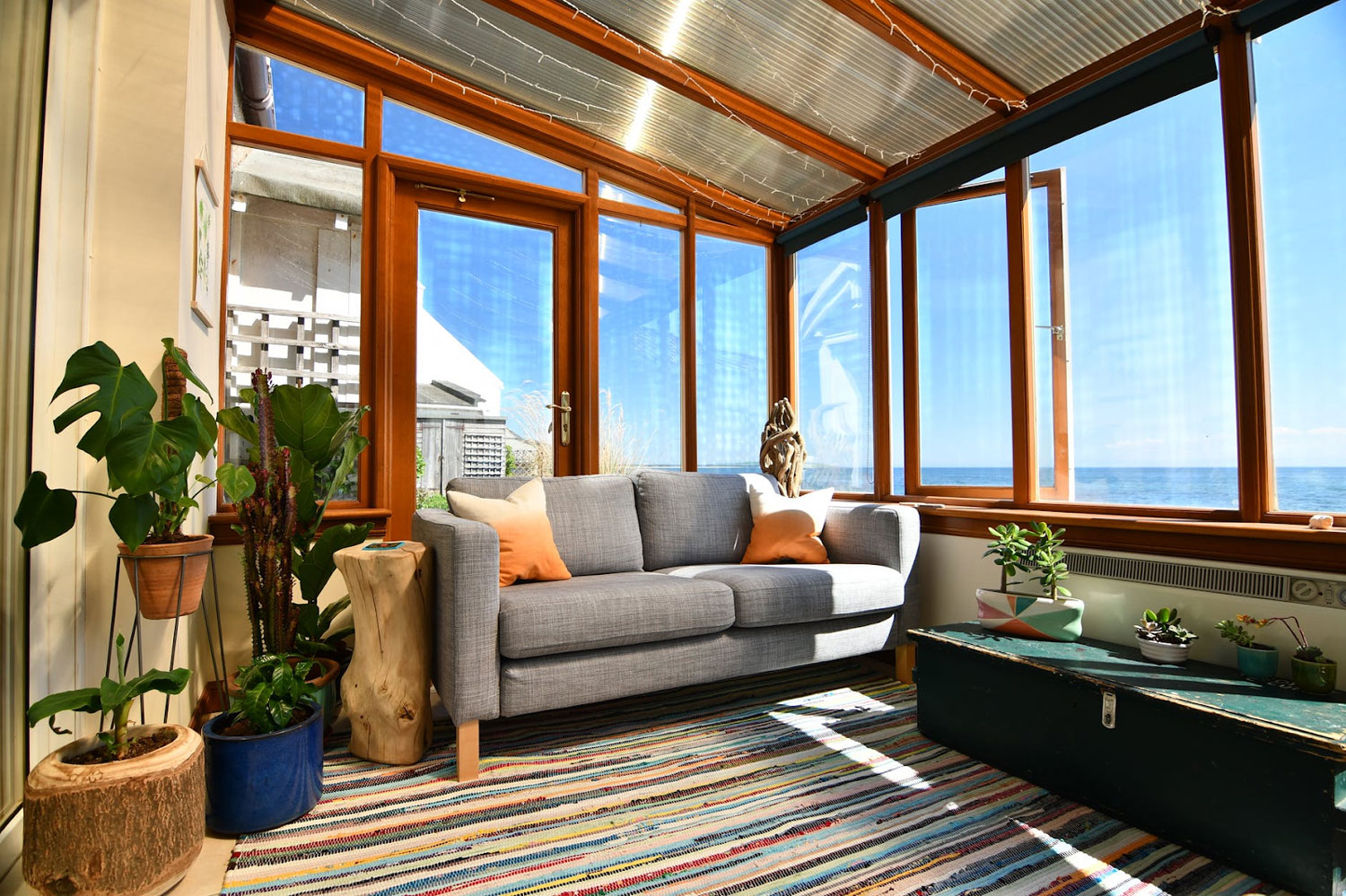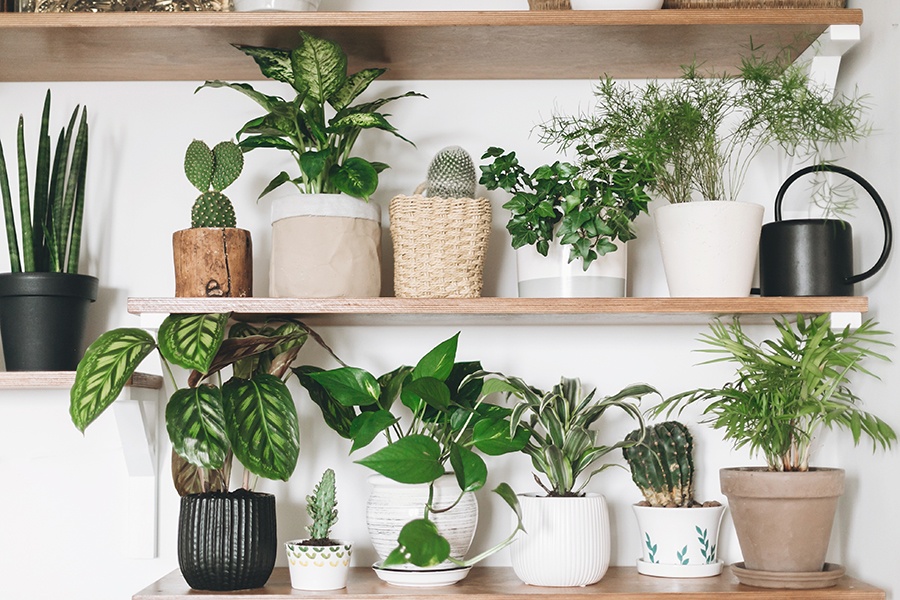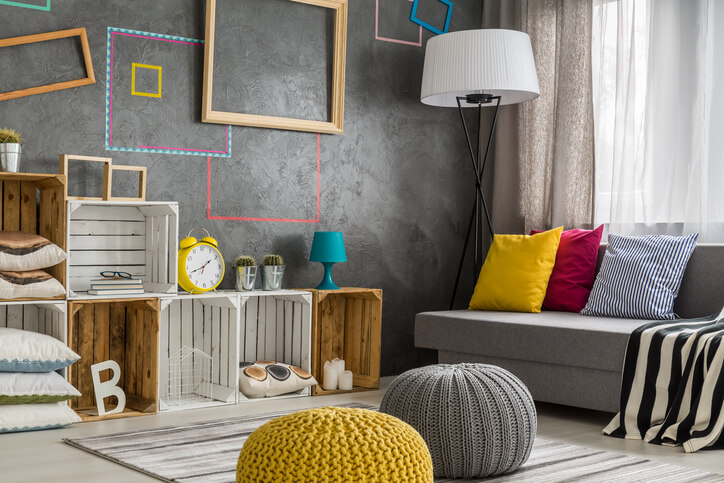When it comes to creating a sustainable living room, one of the key elements to consider is the furniture. Opting for eco-friendly furniture not only reduces the impact on the environment but also creates a healthier space for you and your family. Look for furniture made from renewable materials such as bamboo, cork, or reclaimed wood. These materials are not only sustainable, but they also add a unique and natural aesthetic to your living room.Eco-friendly furniture
Incorporating a minimalist design into your living room not only creates a clean and spacious feel, but it also promotes sustainable living. By keeping things simple, you are reducing the need for excess materials and resources. Choose multi-functional pieces of furniture and declutter regularly to maintain a minimalist living room that is both stylish and sustainable.Minimalist design
Using recycled materials for your living room interior design is a great way to reduce waste and give new life to old items. Look for upcycled decor pieces such as coffee tables made from reclaimed wood or repurposed textiles for your curtains and throw pillows. Not only will this add a unique touch to your living room, but it also supports the circular economy and reduces the need for new resources.Recycled materials
Utilizing natural lighting in your living room is not only energy-efficient but also has numerous health benefits. Make the most out of sunlight by choosing sheer curtains, strategically placing mirrors to reflect light, and keeping windows clean. This will not only help reduce your energy consumption but also create a brighter and more positive atmosphere in your living room.Natural lighting
Choosing sustainable textiles for your living room can have a big impact on the environment. Look for organic cotton or hemp for your curtains, cushions, and rugs. These materials are not only environmentally friendly but also hypoallergenic and durable. You can also opt for repurposed textiles, such as vintage or secondhand fabrics, to add a unique touch to your living room while reducing waste.Sustainable textiles
Adding indoor plants to your living room not only adds a touch of natural beauty, but also has numerous health benefits. Plants help purify the air, reduce stress, and improve overall well-being. Choose low-maintenance plants such as succulents or spider plants, and opt for organic potting soil and plant-based fertilizers to keep your living room eco-friendly.Indoor plants
Another way to create a sustainable living room is by choosing energy-efficient lighting options. Opt for LED or CFL bulbs, which use less energy and last longer than traditional incandescent bulbs. You can also install smart lighting systems that allow you to control the lights and set timers, ensuring that they are only used when needed.Energy-efficient lighting
Incorporating upcycled decor into your living room interior design not only adds a unique touch, but also supports sustainable living. Look for vintage or secondhand pieces that can be repurposed and given a new life. This not only reduces waste but also adds character and personality to your living room.Upcycled decor
When it comes to choosing materials for your living room, opt for organic options whenever possible. This includes organic cotton or linen for your upholstery, wool or sisal for your rugs, and organic wood for your furniture. These materials are not only sustainable, but also hypoallergenic and chemical-free, creating a healthier living space.Organic materials
Lastly, when decorating your living room, consider using biodegradable products whenever possible. This can include biodegradable cleaning products, bamboo or corn-based disposable dishware for entertaining, and recyclable or compostable packaging for any new items you purchase. This will not only reduce waste but also contribute to a more sustainable and eco-friendly living room.Biodegradable products
The Importance of Sustainable Living Room Interior Design

Creating a Beautiful and Eco-Friendly Space
 In today's world, there is a growing concern for the environment and the impact that humans have on it. As a result, more and more people are looking for ways to make their homes more sustainable and environmentally friendly. One area that is often overlooked when it comes to sustainability is interior design. However, the living room, being a central and highly utilized space in the home, is the perfect place to start incorporating sustainable design elements.
Sustainable living room interior design
focuses on using materials, furniture, and decor that are environmentally friendly and have a minimal impact on the planet. This not only helps to reduce our carbon footprint, but it also creates a healthier and more comfortable living space. By considering sustainability in your living room design, you can create a beautiful and functional space that is both aesthetically pleasing and eco-friendly.
In today's world, there is a growing concern for the environment and the impact that humans have on it. As a result, more and more people are looking for ways to make their homes more sustainable and environmentally friendly. One area that is often overlooked when it comes to sustainability is interior design. However, the living room, being a central and highly utilized space in the home, is the perfect place to start incorporating sustainable design elements.
Sustainable living room interior design
focuses on using materials, furniture, and decor that are environmentally friendly and have a minimal impact on the planet. This not only helps to reduce our carbon footprint, but it also creates a healthier and more comfortable living space. By considering sustainability in your living room design, you can create a beautiful and functional space that is both aesthetically pleasing and eco-friendly.
Reducing Your Carbon Footprint
 One of the main principles of sustainable living room interior design is to reduce your carbon footprint. This can be achieved in several ways, such as using natural and renewable materials, opting for energy-efficient lighting and appliances, and choosing locally sourced products. By using sustainable materials, you are not only reducing the amount of waste that goes into landfills, but you are also minimizing the energy and resources used in the production process.
In addition, incorporating energy-efficient lighting and appliances can significantly reduce your energy consumption and, in turn, your carbon footprint. This can be achieved through the use of LED light bulbs, which last longer and use less energy than traditional incandescent bulbs, or by investing in energy-efficient appliances, such as refrigerators and televisions.
One of the main principles of sustainable living room interior design is to reduce your carbon footprint. This can be achieved in several ways, such as using natural and renewable materials, opting for energy-efficient lighting and appliances, and choosing locally sourced products. By using sustainable materials, you are not only reducing the amount of waste that goes into landfills, but you are also minimizing the energy and resources used in the production process.
In addition, incorporating energy-efficient lighting and appliances can significantly reduce your energy consumption and, in turn, your carbon footprint. This can be achieved through the use of LED light bulbs, which last longer and use less energy than traditional incandescent bulbs, or by investing in energy-efficient appliances, such as refrigerators and televisions.
Creating a Healthy and Comfortable Space
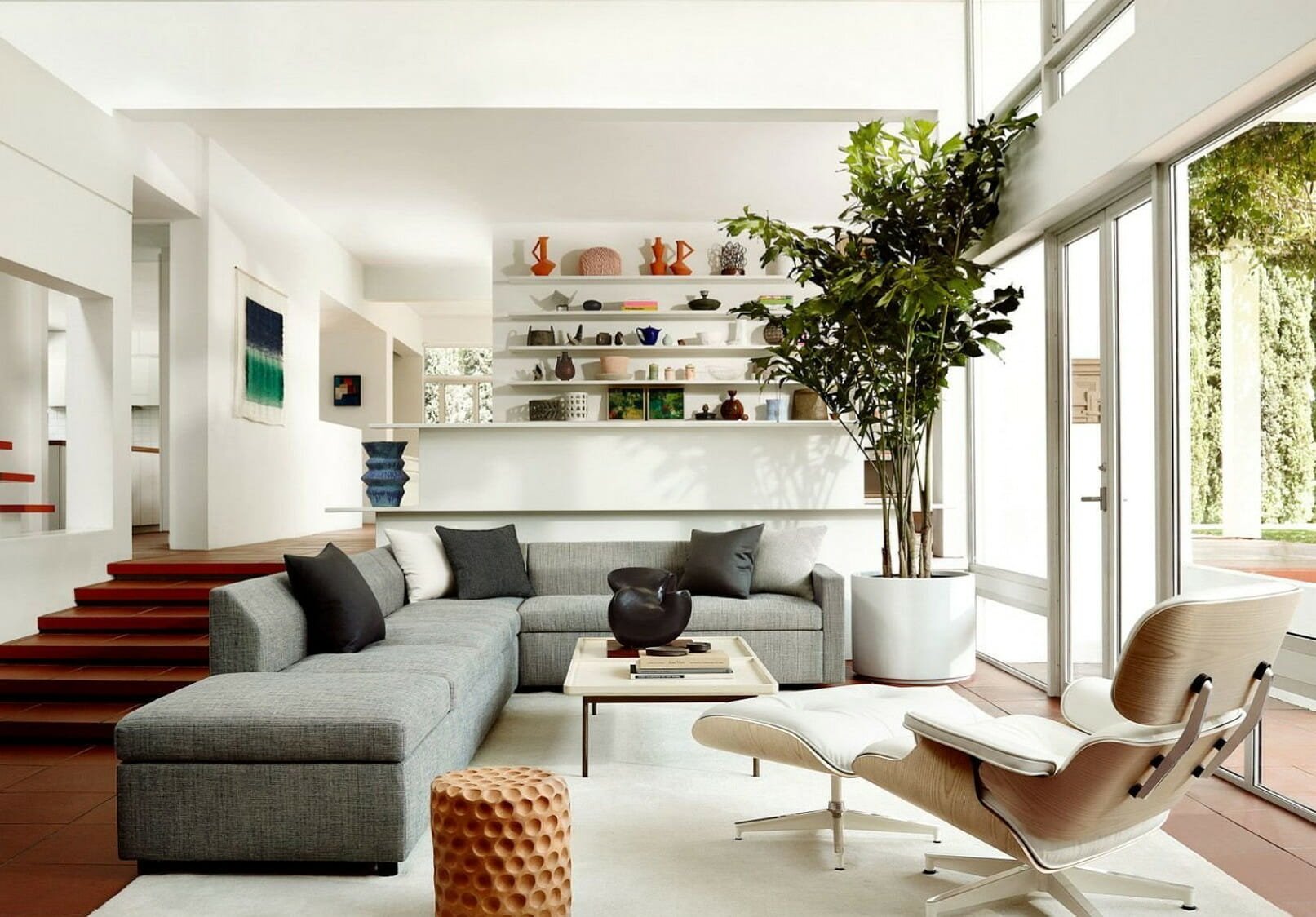 Aside from reducing your carbon footprint,
sustainable living room interior design
also focuses on creating a healthy and comfortable space for you and your family. This means choosing materials and furniture that are non-toxic and eco-friendly. For example, instead of using furniture made from particleboard or MDF, which can emit harmful chemicals, opt for furniture made from natural materials like bamboo or reclaimed wood.
In addition, incorporating plants into your living room design can help improve air quality and add a touch of nature to your space. Plants not only absorb harmful pollutants, but they also release oxygen, creating a healthier and more comfortable environment for you and your family.
In conclusion,
sustainable living room interior design
is not only beneficial for the environment, but it also allows you to create a beautiful and functional living space. By considering sustainability in your design choices, you can reduce your carbon footprint and create a healthier and more comfortable home for you and your family. So, why not start incorporating sustainability into your living room design today? Your planet and your family will thank you.
Aside from reducing your carbon footprint,
sustainable living room interior design
also focuses on creating a healthy and comfortable space for you and your family. This means choosing materials and furniture that are non-toxic and eco-friendly. For example, instead of using furniture made from particleboard or MDF, which can emit harmful chemicals, opt for furniture made from natural materials like bamboo or reclaimed wood.
In addition, incorporating plants into your living room design can help improve air quality and add a touch of nature to your space. Plants not only absorb harmful pollutants, but they also release oxygen, creating a healthier and more comfortable environment for you and your family.
In conclusion,
sustainable living room interior design
is not only beneficial for the environment, but it also allows you to create a beautiful and functional living space. By considering sustainability in your design choices, you can reduce your carbon footprint and create a healthier and more comfortable home for you and your family. So, why not start incorporating sustainability into your living room design today? Your planet and your family will thank you.















